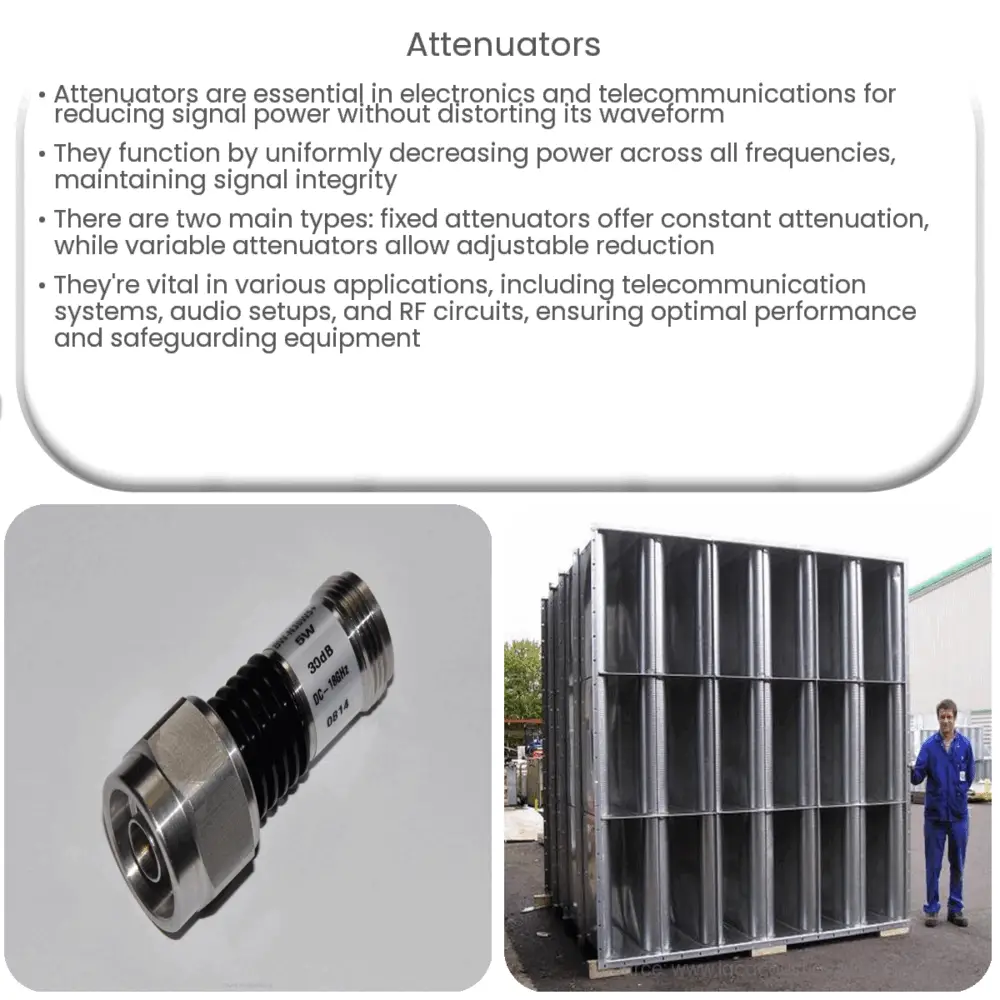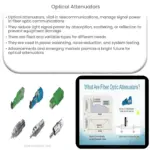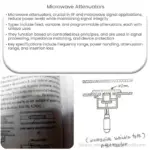Explore the concept of attenuators in electronics, their types, applications, key features, and design parameters for optimal signal control.

Introduction to Attenuators
Attenuators are fundamental components used extensively in the realm of electronics and telecommunications. They are implemented to reduce the level of power of a signal without considerably distorting its waveform. This functionality allows for better control and adaptation of signals in different system environments.
The Functioning of Attenuators
Attenuators work by reducing the power of a signal equally across all frequencies, maintaining the integrity of the original signal. This ensures that the signal continues to represent the same information after attenuation, albeit at a lower power level. The degree of attenuation is quantified in decibels (dB).
Types of Attenuators
- Fixed Attenuators: They provide a constant level of attenuation, irrespective of the input signal power. Fixed attenuators are commonly used in applications where the input signal’s power needs to be reduced to a predetermined level.
- Variable Attenuators: They offer a varying degree of attenuation. Users can manually adjust the level of signal reduction, making variable attenuators highly versatile in applications where signal power levels fluctuate frequently.
Applications of Attenuators
Attenuators find wide applications in diverse fields:
- In telecommunication systems, they are used to control signal levels to prevent damage to sensitive equipment due to high power signals.
- In audio systems, attenuators are used to adjust volume levels while maintaining audio quality.
- RF circuits utilize attenuators to reduce signal strength for optimal performance.
Key Features of Attenuators
Choosing an attenuator for a specific application requires understanding their key features:
- Attenuation Accuracy: The precision with which an attenuator can reduce signal power is a critical performance metric. This accuracy often varies with frequency, and the specific needs of the application will dictate the required accuracy.
- Frequency Range: The range of frequencies over which the attenuator can effectively reduce signal power is another vital feature. Certain applications might require a wide frequency range, while others might only need attenuation over a narrow frequency band.
Design Parameters of Attenuators
Designing an attenuator requires consideration of several factors. These include the frequency range, power handling capability, the desired level of attenuation, and physical size constraints of the system in which the attenuator will be used.
- Frequency Range: The frequency range for which the attenuator is designed is vital. Different applications, such as radio, television, or internet data signals, operate over different frequency ranges and require appropriately designed attenuators.
- Power Handling: The attenuator must be capable of handling the power level of the signals it will process. In some applications, this could be relatively low, but in others, it could be quite high.
- Attenuation Level: The level of attenuation required is another important design factor. This will depend on the specific application and the signal power levels that need to be achieved.
- Size Constraints: Physical size constraints can also play a role in the design of an attenuator, particularly in compact or portable systems.
Choosing the Right Attenuator
Selecting the right attenuator depends on understanding the needs of the specific application. One must consider factors such as the frequency range, required attenuation level, power handling capability, and physical size. In addition, it is crucial to verify that the attenuator’s performance characteristics align with the needs of the system in which it will be used.
Conclusion
In conclusion, attenuators play a significant role in a broad range of electronic and telecommunications systems. They offer critical functionality in reducing signal power while preserving signal integrity. By understanding the various types of attenuators, their key features, and design parameters, one can select the appropriate attenuator for a given application. Whether for a telecommunications system, an audio setup, or an RF circuit, attenuators ensure that signal power levels are optimized for performance and protection of sensitive equipment.




